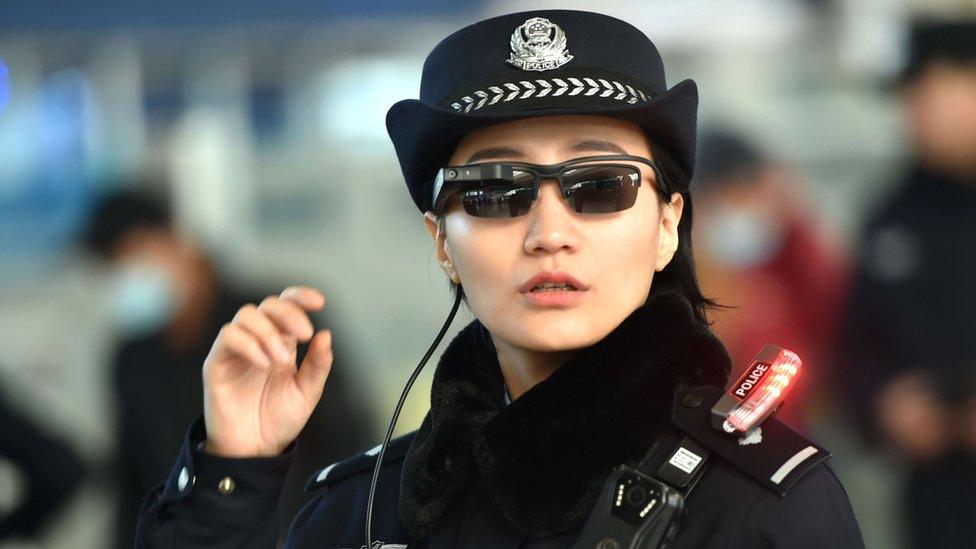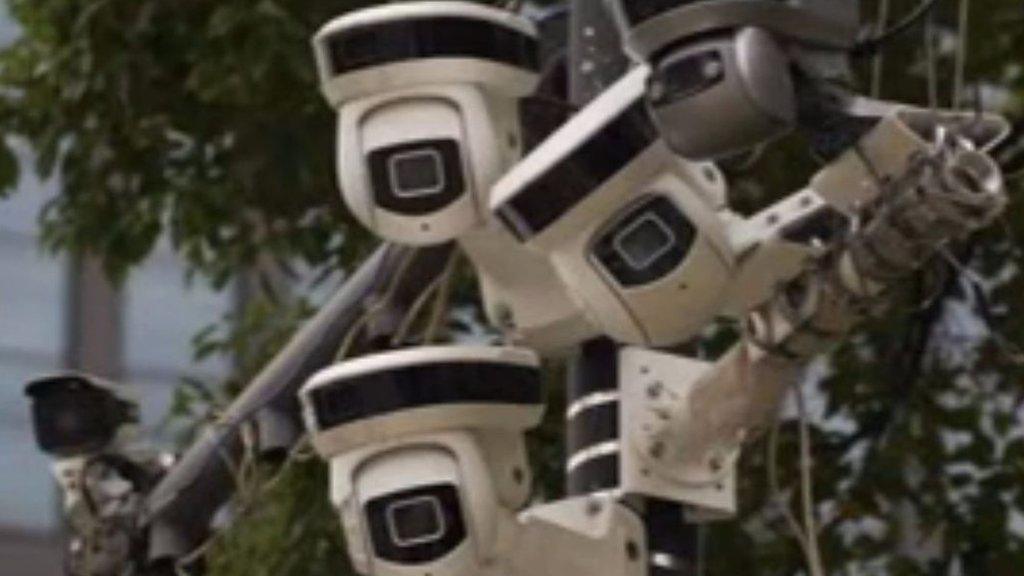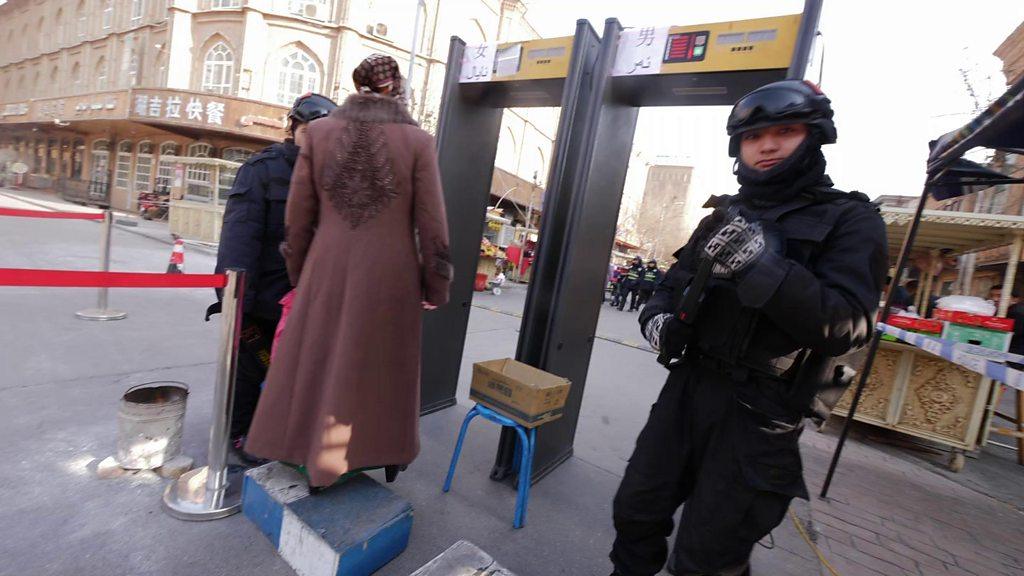Chinese police spot suspects with surveillance sunglasses
- Published

The modified sunglasses are connected to an internal database of suspects
Police in China have begun using sunglasses equipped with facial recognition technology to identify suspected criminals.
The glasses are connected to an internal database of suspects, meaning officers can quickly scan crowds while looking for fugitives.
But critics fear the technology will give even more power to the government.
The sunglasses have already helped police capture seven suspects, according to Chinese state media.
Police used the new equipment at a busy train station in the central city of Zhengzhou to identify the suspects.
The seven people who were apprehended are accused of crimes ranging from hit-and-runs to human trafficking.
Police also identified 26 people who were using fake IDs, the ruling communist party's People's Daily newspaper reported.
In your face: China's all-seeing surveillance system
The technology allows police officers to take a photograph of a suspicious individual and then compare it to pictures stored in an internal database. If there is a match, information such as the person's name and address will then be sent to the officer.
But there are fears that China's authoritarian leaders will use the sunglasses to track political dissidents or profile ethnic minorities.
China is a world leader in facial recognition technology and regularly reminds its citizens that such equipment will make it almost impossible to evade the authorities.
The country has been building what it calls "the world's biggest camera surveillance network".
An estimated 170 million CCTV cameras are already in place and some 400 million new ones are expected be installed in the next three years.
Many of the cameras use artificial intelligence, including facial recognition technology.
- Published10 December 2017

- Published1 February 2018

- Published26 October 2015
